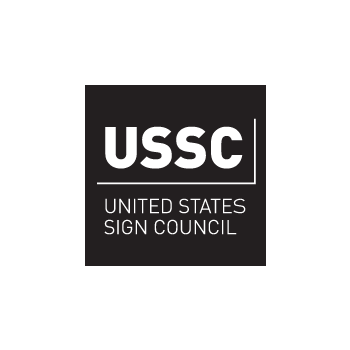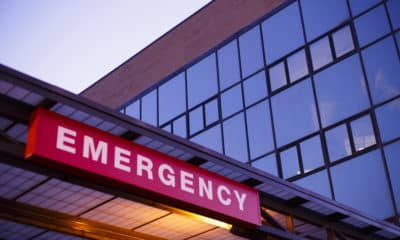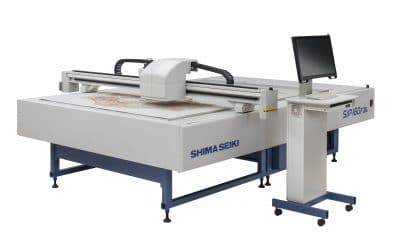The United States Sign Council’s (USSC; Bristol, PA) November 29 decision to merge the USSC with its research-oriented USSC Foundation is based on its desire to perpetuate USSC’s most tangible, continuing contribution to the sign industry: documenting the need for and benefits of equitable sign codes and conspicuous signage. The change signals the end to a 45-year-old organization that originated as the Eastern States Sign Council (ESSC) in 1972. It became the National Electric Sign Assn. (NESA; now known as the Intl. Sign Assn.) regional association in 1980. During that heady economic time, NESA created its Regionalization Plan and divided the US into seven regions, with Canada being the eighth.
A dispute
NESA held an international expo and three regional shows every year, so each region had one show every two years. Each region had the option of having NESA coordinate the entire show, completely coordinating it themselves or any ratio in between. Subsequently, the profits from the show returned to the regional organization were designed to reflect that ratio.
However, in 1989, the ESSC hosted a NESA regional show in Atlantic City with NESA assistance. For its share of the profits, ESSC received $16,000. A bitter dispute followed.
ESSC’s next event, a regional show in 1991, again in Atlantic City, attracted more than 7,000 attendees, which made it the best-attended regional show ever. ESSC received $160,000 from NESA, as it was also the most profitable regional show ever.
ESSC then announced plans to host its own show in Atlantic City the following year, because it wouldn’t have another regional show until 1996 based on the NESA schedule. (The 1994 international expo was held in Washington.) Then, in March 1992, ESSC announced itself as a separate, dues-paying association.
However, in a joint interview (see ST, June 1992, page 115) with NESA President George Kopecky and ESSC Executive Director Andrew Bertucci, the latter was asked, “Will ESSC continue to be a part of NESA?” Bertucci answered, “Most definitely.” ESSC hosted an independent show in Atlantic City in November 1993, and has hosted annual shows ever since, typically on the first weekend in December.
Advertisement
Name change and foundation
In 1996, the ESSC changed its name to the USSC in order to expand beyond its East Coast origins. (The same year, NESA changed its name to ISA.) Bertucci continued as its executive director until 2010. His long-time business partner, Nancy Maren, then assumed the role of executive director. Bertucci died tragically a year later.
Since its founding in 1999, the USSC Foundation has commissioned the Larson Transportation Institute at Penn State Univ. to conduct 21 research projects concerning on-premise signage. I once used USSC’s visual-acuity charts to get a variance for my church’s sign in a residential neighborhood. Here’s an article the documents how three other people used USSC research to achieve equitable signage.
In 2003, USSC became the first sign association to exhibit at the annual American Planning Assn. conference. It returned there in 2008 and for several years thereafter.
Overcoming obstacles
In 1977, the Landscape Architecture Foundation published the infamous Street Graphics book. When it was shown to have leaned heavily on the research of George Miller, it was rewritten in 1988 as Street Graphics and the Law. In the 2004 revised edition of the same title, Bertucci’s name appeared on the cover, and he wrote a chapter about USSC’s “best practices” standards, which were based on Penn State research. Subsequently, in the 2015 Fourth Edition of the book, USSC Legislative Consultant Rick Crawford tweaked those standards.
In 1999, the Federal Highway Administration commissioned human-factors researcher Jerry Wachtel to study the safety aspects of electronic message centers (EMCs). The report, Safety Impacts of the Emerging Digital Display Technology for Outdoor Advertising Signs, asserts that EMC signs are distractive, and, as a result, pose traffic-hazard issues. USSC’s Richard Crawford’s wrote a stinging rebuttal in a report entitled Inside the Wachtel 2009 Digital Display Report: A Commonsense Guide. In part, Crawford said the report “presents us with a theory, advanced by a presumed unbiased researcher that is not supported by any direct evidence, not based or supported by any new research by the author, and is contradicted by research conducted by reputable universities and professionals in this field.”
Working together
between USSC and ISA were often contentious, but they joined together when greater challenges loomed. In 2008, the two associations (plus World Sign Associates) huddled together to confront Underwriters Laboratories (UL) about rising prices and some questionable practices. In 2006, the two associations began working collaboratively to fight against anti-EMC regulations with a group called the Electronic Display Educational Research Assn. (EDERA). Four years later, another group was to be called the EMC Association Group (EMCAG). Although nothing tangible occurred in either case, the desire was there.
Advertisement
USSC’s Sign World shows uniquely featured The Bullpen, where sign artisans gathered to hand letter, pinstripe, gild, carve and demonstrate other manual, signmaking skills typical of the Letterhead movement. And each year, a charity benefitted, thanks to the ongoing commitment of Bruce Gough (BG Graphics, Meriden, CT). For more than a decade, the Boys and Girls Club of Atlantic City sponsored Signtex, a work-study program taught by Jess Caserta that taught signmaking skills to at-risk youth. (At the final Sign World show in December, I saw Jess talking with a former student, who had served some time in jail, but was now attending the show with his wife and three children.)
Also, at what could be the final Bullpen, eight pinstripers participated in a “panel jam,” in which they produced 14 panels, with each artist striping every panel. Each striper spent two minutes on each panel, which sold for $50. The money was donated to a local fire museum. In addition, the Bullpen hand-rendered a 4 x 10-ft. sign for that museum.
In other competitive activities, USSC hosted its annual sign design contest, the results of which were preserved in annual calendars for more than a decade. USSC also hosted its newer, vehicle-wrap contest, which began in 2014.
New show, new venue
This major reorganization will be most visible with the hosting of The Sign Exchange show, which will be held Nov. 29-30, 2018 at a newer Atlantic City venue, Harrah’s Resort Atlantic City. Otherwise, there will no longer be a paid staff. USSC Foundation governance will come from a volunteer, five-person board. All Board members previously served on the USSC Board: Adam Brown, Wendy Kern, Max Aronow, Richard Crawford and Neal Wilcox.


 Tip Sheet3 days ago
Tip Sheet3 days ago
 Business Management2 weeks ago
Business Management2 weeks ago
 Women in Signs2 weeks ago
Women in Signs2 weeks ago
 Real Deal4 days ago
Real Deal4 days ago
 Editor's Note1 week ago
Editor's Note1 week ago
 Benchmarks13 hours ago
Benchmarks13 hours ago
 Line Time2 weeks ago
Line Time2 weeks ago
 Product Buying + Technology1 week ago
Product Buying + Technology1 week ago
















